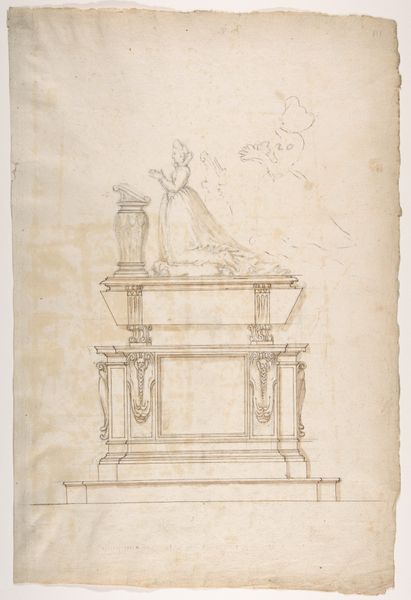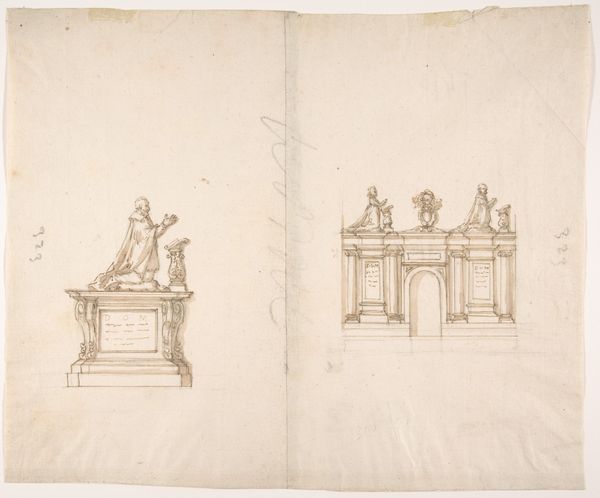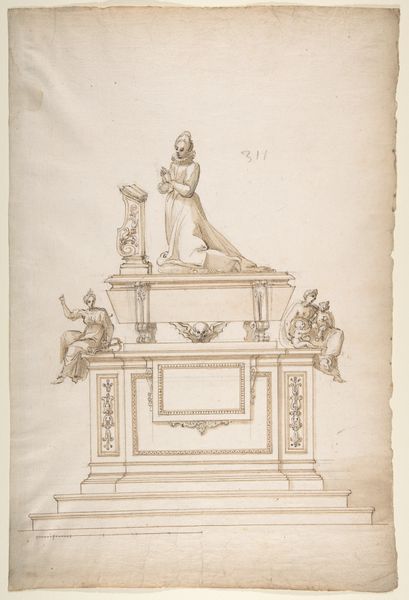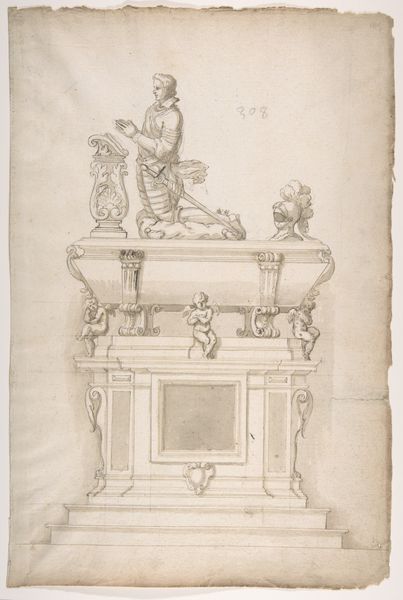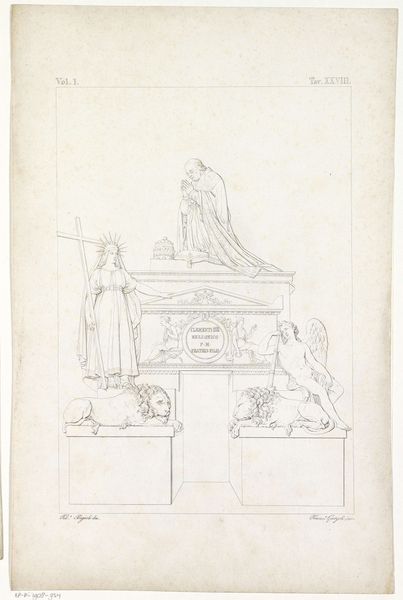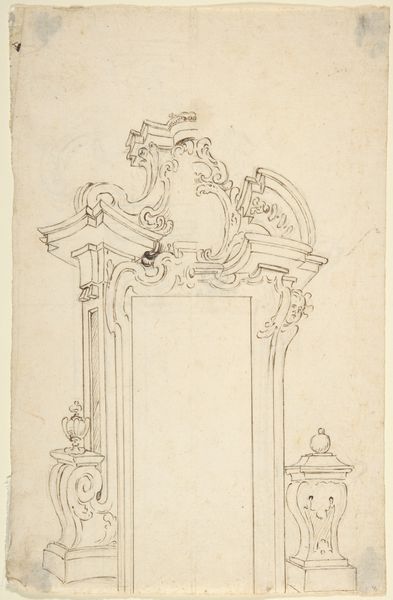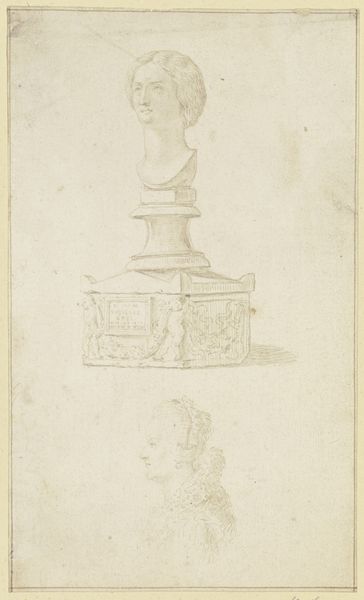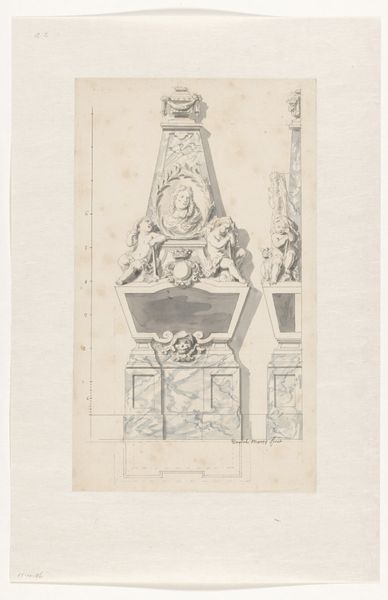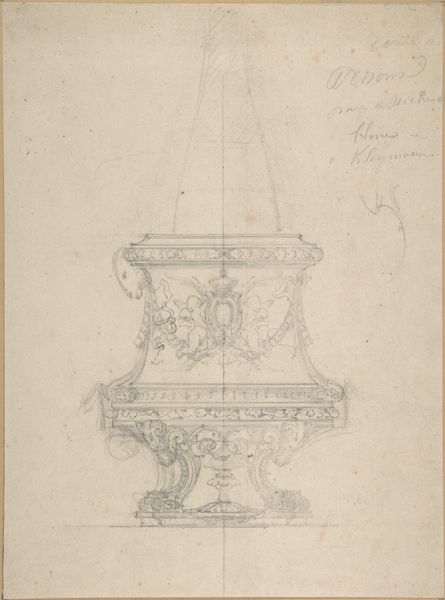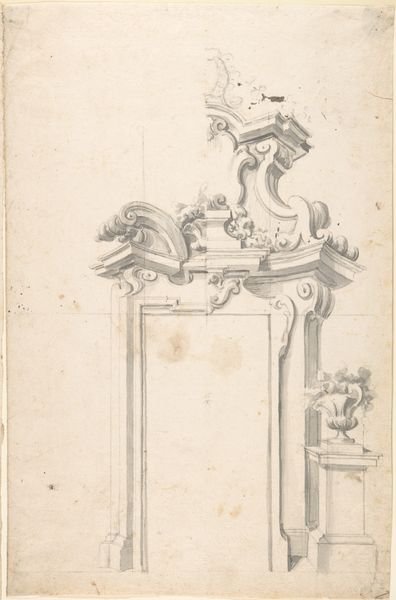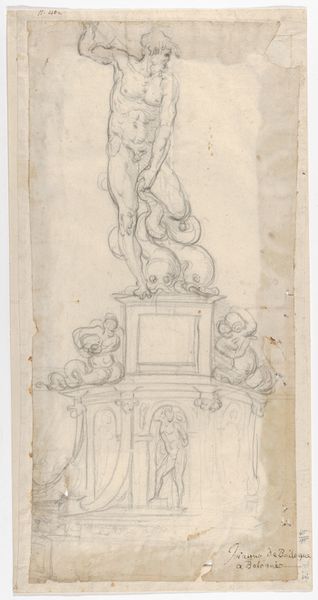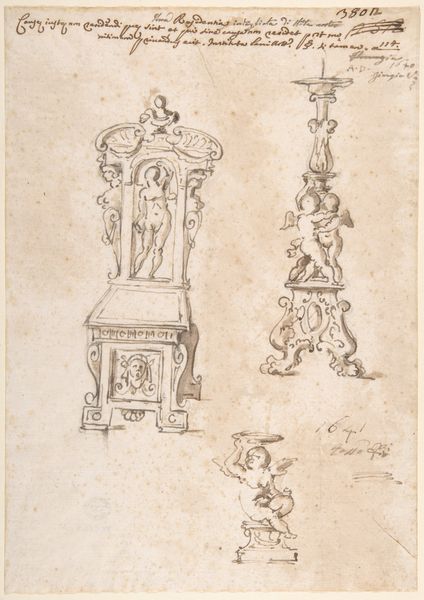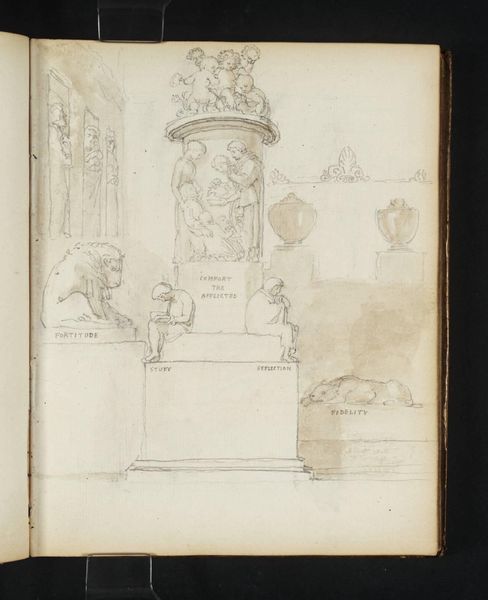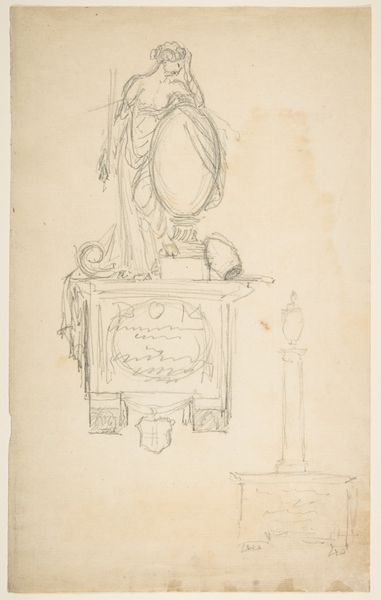
Designs for Decorations in the Throne Room, Royal Palace, Milan 1808
0:00
0:00
drawing, pencil
#
drawing
#
pencil
#
cityscape
#
history-painting
Dimensions: 11-5/8 x 7-1/4 in
Copyright: Public Domain
Curator: This is a fascinating find: a sheet of designs for decorations in the Throne Room of the Royal Palace in Milan. They date back to 1808. Editor: There’s a captivating starkness to these pencil drawings. I’m immediately drawn to the central sketch, a majestic, though slightly unfinished, pillar design topped with what looks like a fruit-laden urn. Curator: Yes, a truly revealing artifact. The designs provide a peek into the Napoleonic era's visual language of power and imperial ambitions in Milan. The artist seems to be someone connected to the project who kept this for the ages. Editor: Notice how the artist uses subtle shading and sparse lines to define the architectural structure? There’s a calculated balance to it, despite the drawing not being complete, that speaks to the Neoclassical ideals of order and rationality. The symbolic eagle looks alert despite the pencil. Curator: Absolutely. This visual language of order was employed throughout Europe by those allied or influenced by Napoleonic France, and, specifically in Milan, by his stepson, Eugène de Beauharnais, then the ruling Prince. Here the eagle conveys that sense of authority. Editor: Also consider the positioning of the elements, where this impressive eagle is grasping the world that then is adorned with an orb, adding an even loftier note. The design feels quite modern. Curator: What’s interesting is the context. It tells us that these designs, likely never fully executed, were drafted in a moment when Milan was at the center of a French satellite kingdom—a key part of Napoleon's wider strategy for controlling the continent. Editor: What this incomplete execution delivers is a tension between vision and what ended up happening, especially from today's vantage. Curator: Precisely, and this sheet shows this brief, revolutionary cultural shift and how Milan’s aesthetic landscape was transformed to serve that ambition. It speaks to the transient nature of political power, a ghost of past empires, which you almost perceive. Editor: The study of line, light, and the unfinished state creates a lingering, thought-provoking aura. An invitation, really, to meditate on form.
Comments
No comments
Be the first to comment and join the conversation on the ultimate creative platform.
